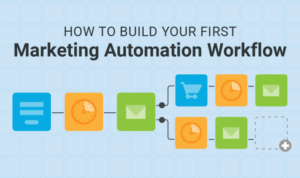Increasing Online Conversions is all about turning website visitors into loyal customers, and we’re about to dive into the nitty-gritty details. From understanding the basics to implementing strategies, this topic is a game-changer for your online business.
Get ready to revamp your website and see those conversion rates soar!
Understanding Online Conversions

Online conversions are crucial in e-commerce as they represent the desired actions taken by website visitors, such as making a purchase, signing up for a newsletter, or downloading a resource. These conversions directly impact the success and profitability of an online business.
Key Metrics for Measuring Online Conversions
- Conversion Rate: This metric measures the percentage of website visitors who complete a desired action, such as making a purchase. A higher conversion rate indicates a more effective website.
- Click-Through Rate (CTR): CTR measures the percentage of users who click on a specific link, ad, or call-to-action. A high CTR indicates that the content is engaging and relevant to users.
- Cart Abandonment Rate: This metric calculates the percentage of users who add items to their shopping cart but do not complete the purchase. A high abandonment rate may signal issues with the checkout process or pricing.
Factors Influencing Online Conversion Rates
- User Experience: A user-friendly website with clear navigation and intuitive design can significantly impact conversion rates by making it easier for visitors to take action.
- Website Speed: Slow loading times can lead to a high bounce rate and lower conversion rates. Optimizing website speed is essential for improving online conversions.
- Offer Relevance: The relevance of your products or services to the target audience plays a critical role in driving conversions. Ensure that your offerings meet the needs and preferences of your customers.
Optimizing Website Design

User-friendly website design plays a crucial role in impacting online conversions. When visitors have a positive experience navigating a website, they are more likely to engage with the content and take desired actions, ultimately leading to higher conversion rates.
Effective Website Elements, Increasing Online Conversions
- Clear Call-to-Action (CTA) Buttons: Make sure that CTA buttons are prominently displayed and easily accessible throughout the website.
- Simple Navigation Menu: A clean and organized navigation menu helps users find what they are looking for quickly and easily.
- High-Quality Visuals: Use high-resolution images and videos to capture visitors’ attention and create a visually appealing experience.
- Customer Testimonials: Including testimonials or reviews from satisfied customers can build trust and credibility, encouraging conversions.
Importance of Mobile Responsiveness
Mobile responsiveness is essential in optimizing online conversions as more and more users are accessing websites on their mobile devices. A website that is not mobile-friendly can lead to a poor user experience, resulting in high bounce rates and decreased conversions. Ensuring that your website is responsive across various devices and screen sizes can significantly improve user engagement and conversion rates.
Implementing Call-to-Actions (CTAs): Increasing Online Conversions
When it comes to increasing online conversions, having compelling Call-to-Actions (CTAs) is crucial. CTAs are what prompt users to take action on your website, ultimately leading to conversions.
Creating Persuasive CTAs
Here are some strategies for creating persuasive CTAs that encourage users to take action:
- Use action-oriented language: Words like “Get Started,” “Buy Now,” or “Sign Up” can create a sense of urgency and prompt users to act.
- Create a sense of FOMO (Fear Of Missing Out): Phrases like “Limited Time Offer” or “Exclusive Deal” can motivate users to convert quickly.
- Highlight the benefits: Clearly communicate what users will gain by clicking on the CTA, such as “Get 20% off your first purchase” or “Download our free e-book.”
- Make it visually appealing: Use contrasting colors, bold fonts, and strategic placement to make the CTA stand out on the page.
Optimal Placement and Design
Placement and design of CTAs can significantly impact conversion rates. Here are some tips for maximizing the effectiveness of your CTAs:
- Above the fold: Place CTAs where they are immediately visible without scrolling, capturing users’ attention right away.
- Multiple CTAs: Include CTAs throughout the page to cater to different user segments and provide multiple opportunities for conversion.
- Mobile optimization: Ensure that CTAs are easy to tap on mobile devices and that they are responsive across different screen sizes.
- A/B testing: Experiment with different CTAs, placements, and designs to see what resonates best with your audience and drives the highest conversions.
Utilizing A/B Testing
A/B testing, also known as split testing, is a method used to compare two versions of a webpage or app against each other to determine which one performs better. This process helps in identifying the elements that can be optimized to improve online conversions.
Elements for A/B Testing
- Headlines
- Call-to-Action (CTA) buttons
- Images
- Colors and design layout
- Content text and copy
Best Practices for A/B Testing
- Clearly define your goals and metrics for testing
- Test one element at a time for accurate results
- Ensure a large enough sample size for statistical significance
- Run tests for a specific duration to capture different visitor behaviors
- Analyze and interpret results to make informed decisions for optimization





